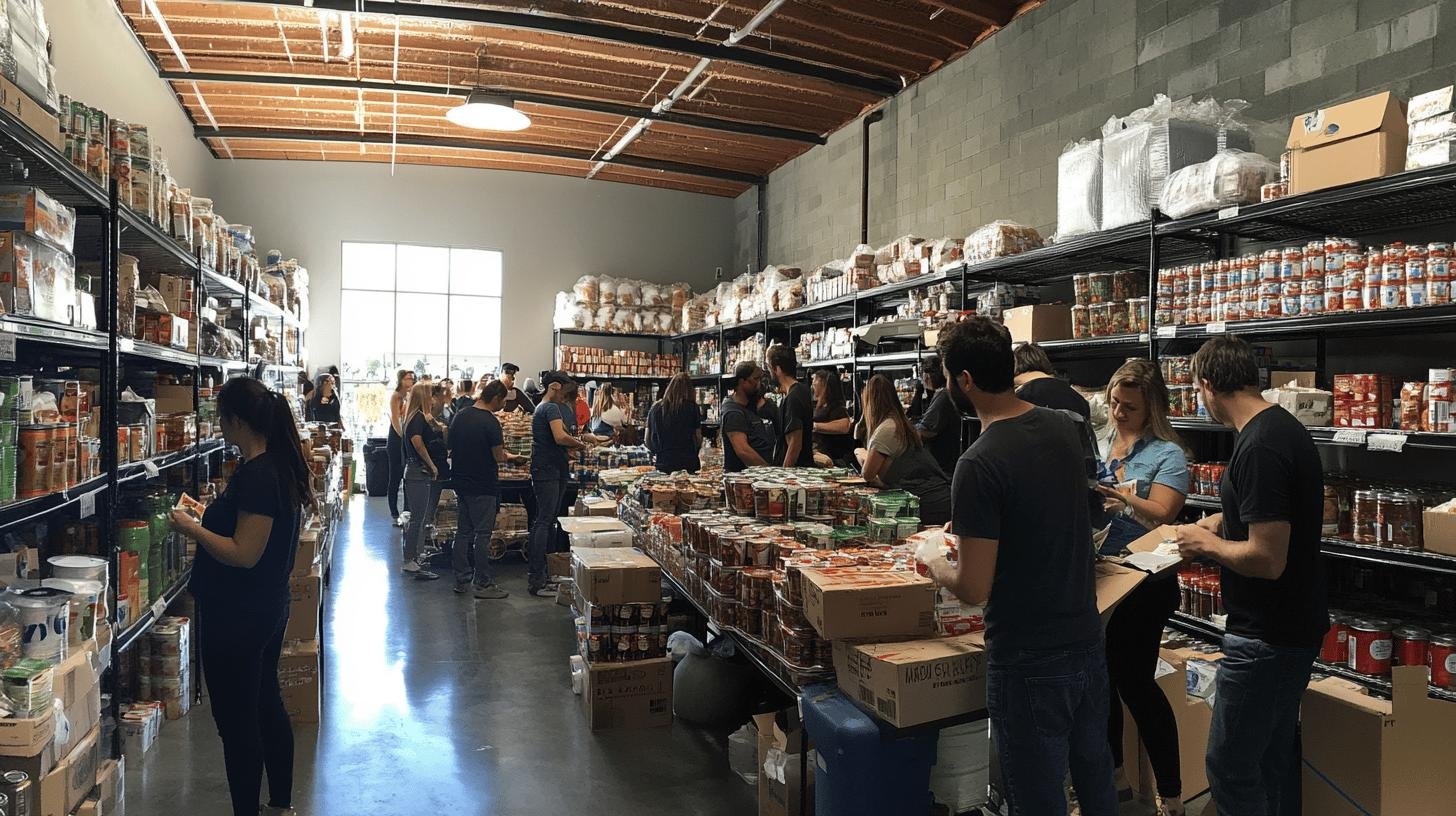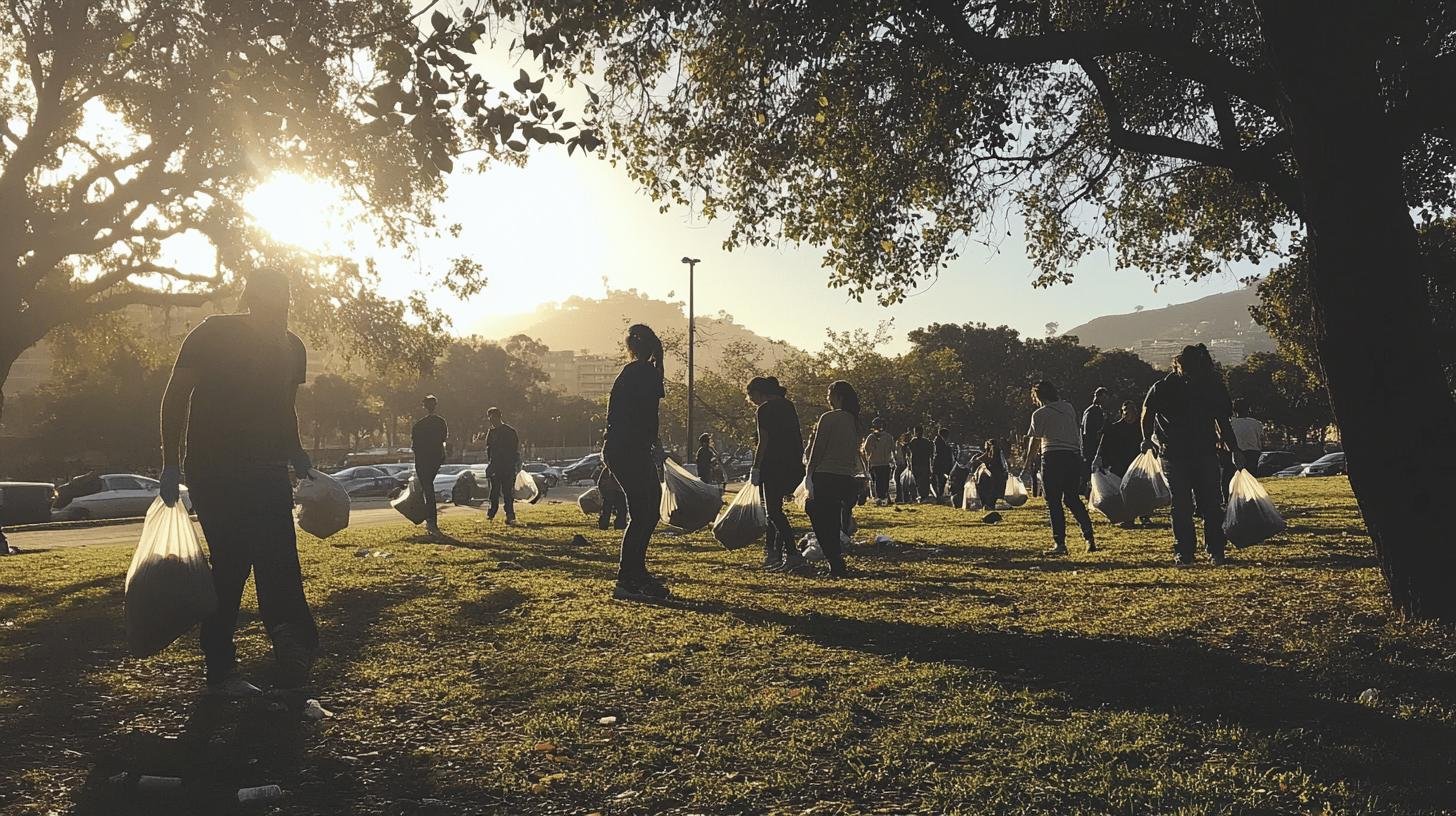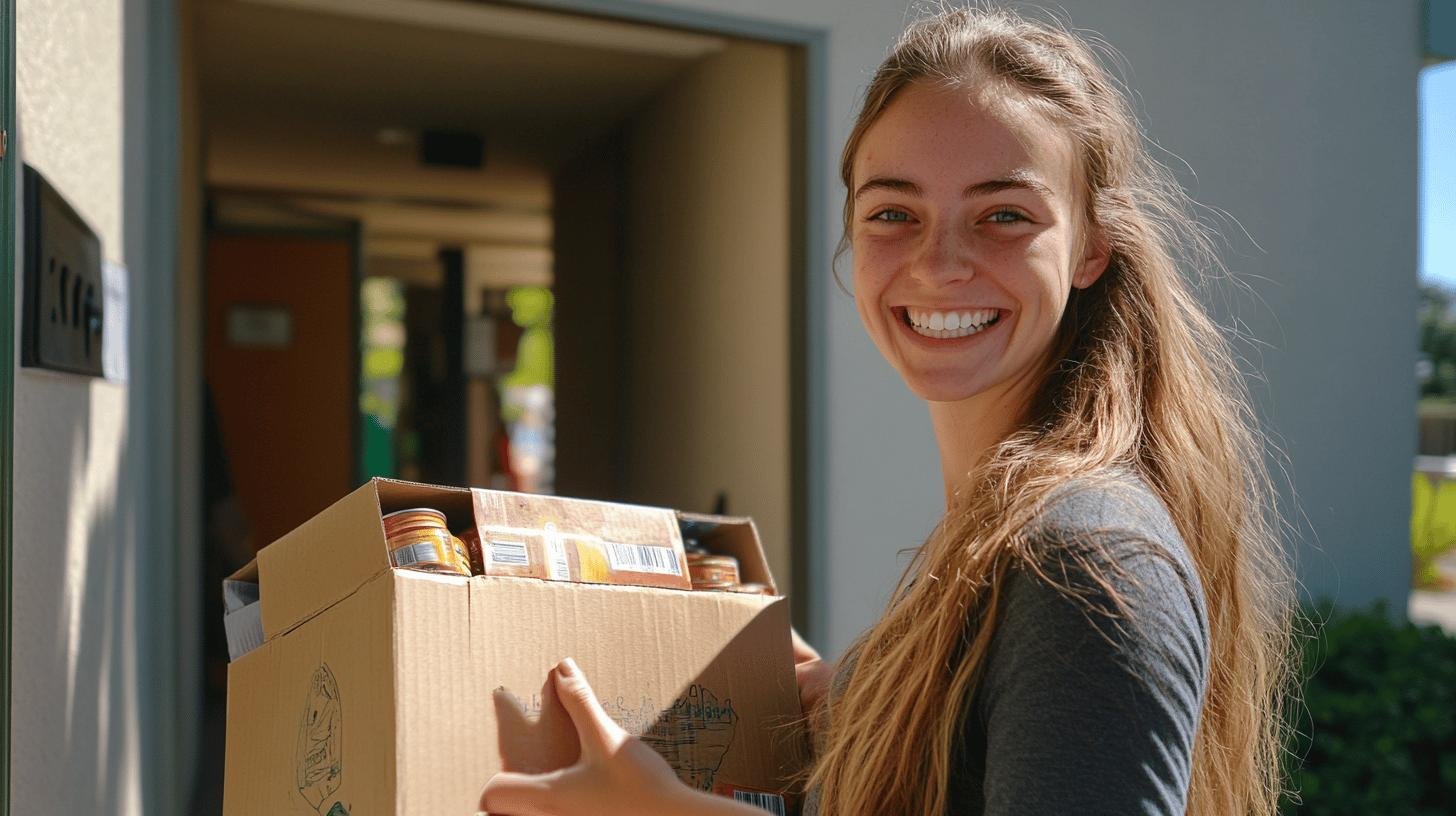TL;DR:
- Community service aids personal growth and enhances community ties.
- Ways to engage: volunteering at schools, hospitals, clean-ups, mentoring, supporting food banks, and advocacy.
- Donation options include food, clothing, monetary support, and local shopping.
- Skill-sharing through workshops (e.g., financial literacy, health, technology) enriches community knowledge.
- Successful community projects include neighborhood clean-ups, gardening, public art, and educational fairs.
- Benefits of involvement: improved local environments, boosted economy, strengthened communal bonds, and enhanced quality of life.
- Community connections foster relationships and trust, creating a supportive atmosphere.
Ever wondered how small acts can spark big changes? Giving back to your community might be the perfect way to make a difference. Why keep these ideas locked away when you can use them to help others? Jumping into community service offers countless benefits—not just for your neighborhood, but for you too.
From volunteering at local schools to organizing clean-up drives, the options are endless. So, what’s stopping you from making an impact right where you are? Explore community service ideas and find out how you can start giving back today.
Exploring Community Service Ideas
Community service is vital for personal growth and bettering the community. Through service activities, people can learn new skills, feel a sense of achievement, and connect more with their community. These experiences often lead to enhanced empathy and a deeper understanding of local issues. Community service not only benefits individuals but also creates a more united and supportive atmosphere for everyone involved.
Some ways to get involved include:
- Volunteering at local schools or educational programs
- Helping at hospitals or healthcare facilities
- Joining community clean-up drives
- Organizing cultural or fundraising events
- Mentoring youth or peers
- Supporting food banks or shelters
- Joining community boards or committees
- Engaging in advocacy or awareness campaigns
These activities offer numerous benefits. Volunteers meet new people, learn teamwork, and develop leadership skills. Meanwhile, communities enjoy cleaner spaces, more resources, and increased awareness of important issues. By participating, individuals help build a vibrant and connected community.
Supporting Local Charities and Donation Options

Donations are key to community development. By giving to local charities, individuals help meet immediate needs and support essential services for the community. Whether it’s supplying meals or funding educational programs, donations help organizations continue their vital work, ultimately creating a stronger, more resilient community.
There are several ways to donate. Consider giving food, clothing, or money to charities and food banks, providing direct aid to those in need. Volunteering your time can be just as impactful, offering support where it’s most needed. Also, shopping at local farmers’ markets supports local agriculture and economies.
These contributions make a big social impact by creating a supportive community. Donations and volunteer work address immediate needs and promote long-term improvements by ensuring resources for those who need them most. Engaging in these activities not only enhances community life but also strengthens the overall community fabric.
Leveraging Personal Skills for Community Benefit
Sharing skills can greatly enrich communities. Hosting workshops or classes allows individuals to empower others and enhance community knowledge. Whether teaching cooking, coding, or crafts, these activities have a significant impact. They create an environment where people feel valued and capable, fostering personal and community growth.
Creating educational programs or workshops is another way to give back. These platforms encourage learning and development. Workshops in areas like financial literacy or art address specific community needs and interests, offering participants new skills and insights that can lead to personal growth and better job opportunities. By focusing on relevant topics, these workshops promote meaningful change and lifelong learning.
Successful Community Workshops
Workshops in financial literacy, health, and technology are especially impactful:
- Financial Literacy: Sessions on budgeting and saving help participants manage their finances better, reduce debt, and increase savings.
- Health: Nutrition and exercise sessions promote healthier lifestyles, lowering community health risks.
- Technology: Coding classes open new career paths, bridging the digital divide and fostering innovation.
These workshops provide practical skills and knowledge, improving well-being and opportunities for participants. They benefit individuals and uplift the entire community.
Organizing and Participating in Community Projects

Community projects are key to unity and meeting local needs. They gather people, fostering a sense of belonging and shared purpose. By focusing on shared goals, such as improving public spaces or local services, these projects strengthen community ties and empower individuals to shape their environment.
When organizing community events, planning is crucial. Start by identifying the community’s needs and interests. Assemble a motivated team with a shared vision and delegate tasks to cover all aspects. Promote the event locally to increase participation. Clear instructions and resources will ensure everyone knows what to expect and can contribute effectively. Success relies on collaboration, communication, and clear objectives.
Ideas for involvement:
- Neighborhood clean-ups
- Community gardening
- Public art installations
- Local advocacy groups
- Educational fairs
- Health and wellness workshops
Participating in community projects offers long-term benefits. These activities improve local environments, boost pride, and strengthen residents’ sense of responsibility. By investing time and effort, individuals help with immediate improvements and lay the foundation for sustained community development. The result is more vibrant and cohesive communities offering a higher quality of life for all.
Building Strong Community Connections
Building strong community connections fosters relationships and trust among residents. Community involvement brings people together, creating shared purpose. Volunteering in projects like neighborhood clean-ups or helping at schools allows individuals to meet others and strengthen communal bonds. These activities promote teamwork, understanding, and cooperation, creating a supportive environment.
Local businesses and events play a vital role in fostering community ties. Supporting local shops keeps money within the community, boosting the local economy. Attending or organizing events like fairs fosters interaction and collaboration, celebrating community culture and reinforcing unity. By participating or supporting these initiatives, individuals contribute to a vibrant, interconnected community where everyone thrives.
| Method | Impact |
|---|---|
| Volunteering | Builds trust and fosters teamwork |
| Supporting local businesses | Boosts the economy, keeps money local |
| Attending community events | Promotes unity and cultural identity |
| Organizing local initiatives | Encourages collaboration and shared purpose |
| Participating in local boards | Influences decision-making and policy |
Final Words
Jumping into community service offers a chance to grow personally while making a real impact. This article explored various ways to give back, from volunteering and supporting local charities to leveraging personal skills. These activities not only help others but also strengthen community bonds.
Involvement in community projects and fostering strong connections can address local needs and enhance social ties.
Considering what can you give back to the community helps foster a sense of belonging and empowerment. Embrace these opportunities to create positive change and build a stronger community together.
FAQ
What are 5 things a person can do to give back to the community?
One can volunteer at schools, assist at healthcare facilities, organize clean-up drives, participate in fundraising events, or mentor youth.
Creative ways to give back to the community?
Creative ideas include organizing cultural festivals, leading community art projects, creating mentorship programs, launching local advocacy campaigns, and hosting skill-sharing workshops.
Ways to give back to the community without money?
Non-monetary ways include volunteering your time at local organizations, joining community boards, offering free workshops, and participating in local clean-up initiatives.
How to give back to the community as a student?
Students can volunteer for community service projects, tutor peers or younger students, join environmental clubs, organize charity events, or participate in community advocacy efforts.
Ways to give back to the community with money?
Monetary contributions can be made by donating to local charities, sponsoring community events, supporting local food banks, buying needs for shelters, or helping fund educational programs.
Giving back to the community meaning?
Giving back involves contributing time, resources, or skills to improve and support one’s local area, fostering a sense of community and shared responsibility.
How to give back to the community as a business?
Businesses can offer sponsorships, organize community service days for employees, donate products or services, partner with local charities, or create scholarship funds.
What is an example of giving back to the community?
An example is organizing a neighborhood clean-up, which enhances the environment and brings residents together to work on a common goal.
In what ways do you give back to the community?
Individuals can join local initiatives, volunteer time, donate resources, engage in community events, offer skills, and support local businesses.
How to give back to your local community?
Engage in activities like volunteering at local organizations, participating in neighborhood events, supporting local markets, or aiding community service efforts.

